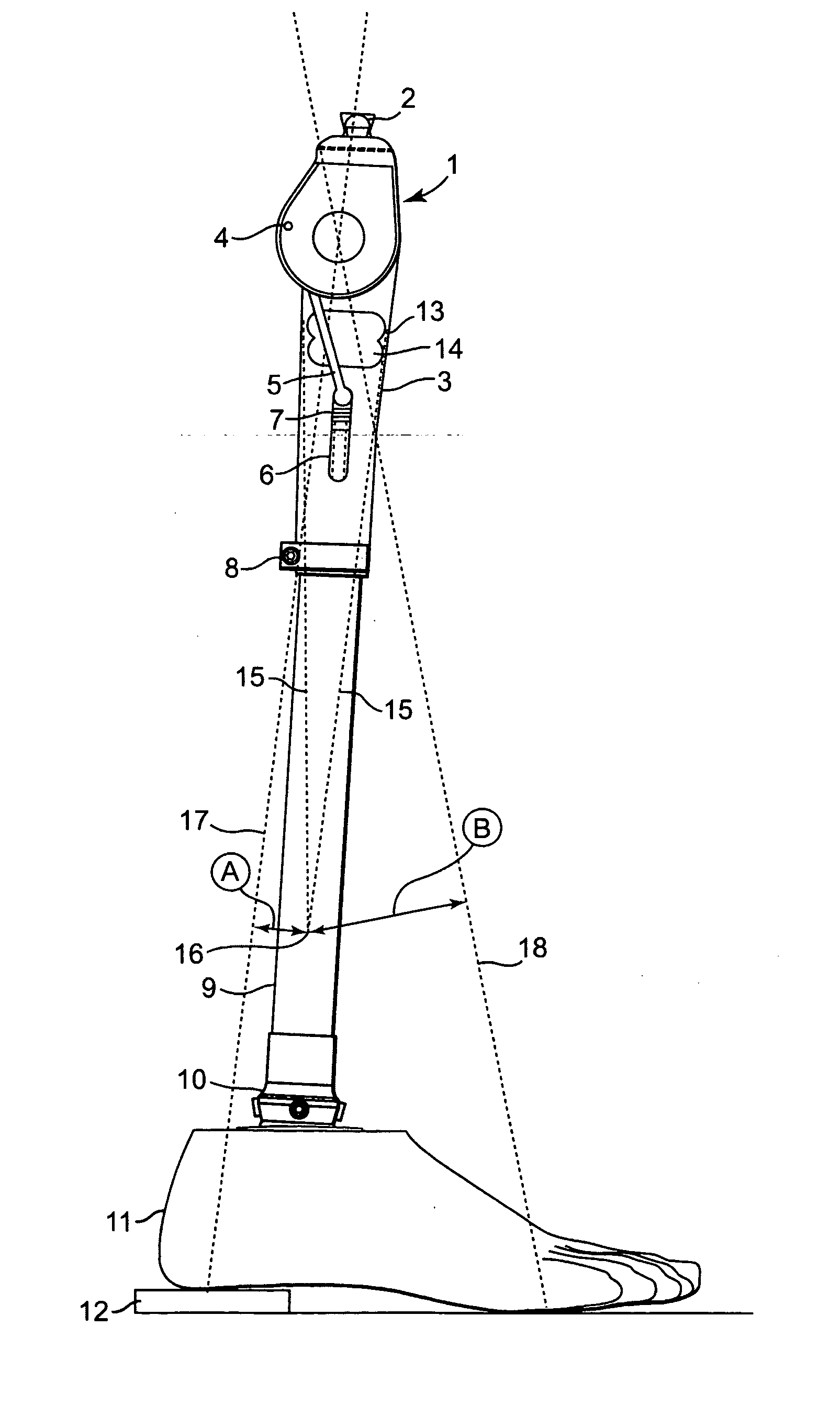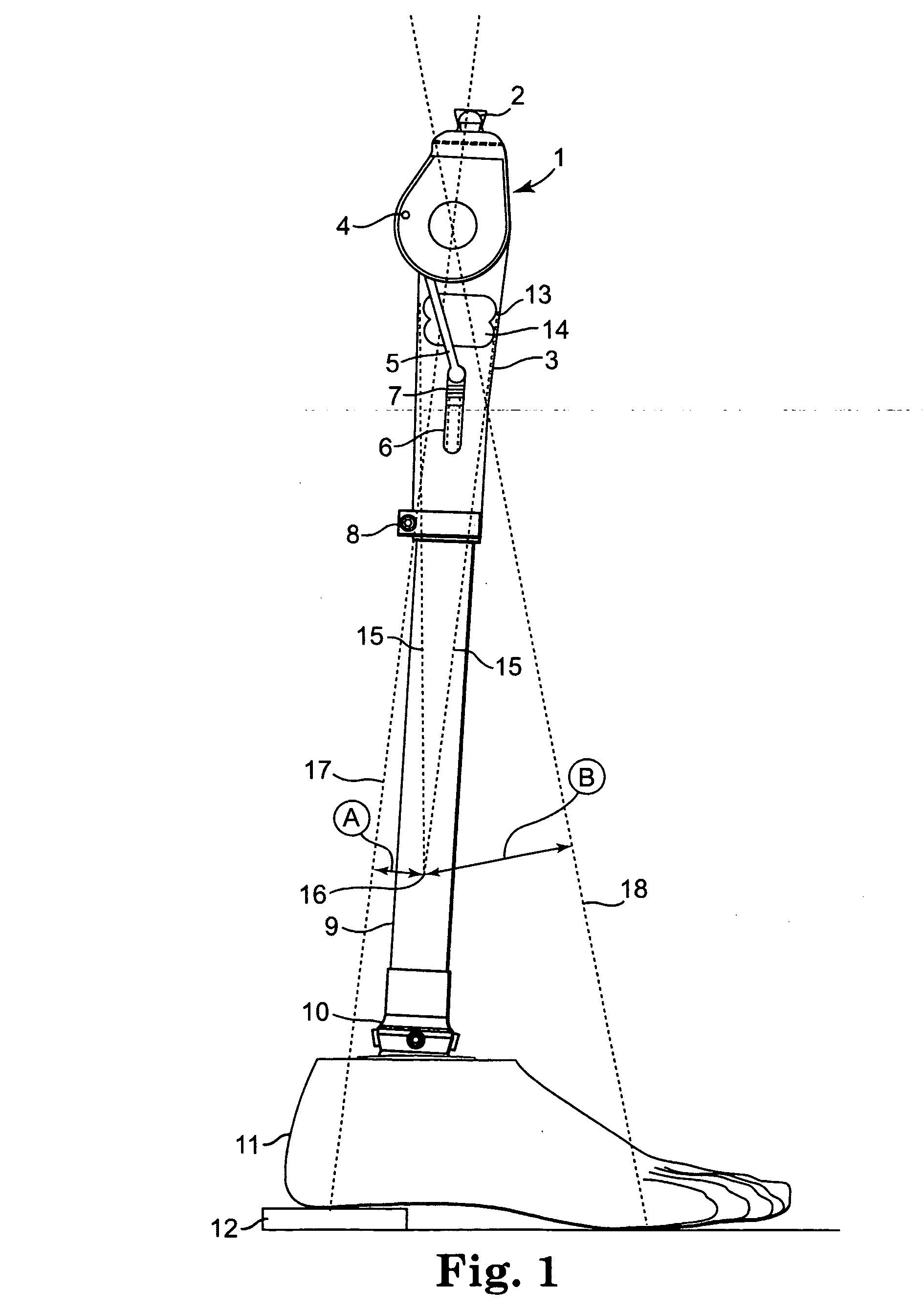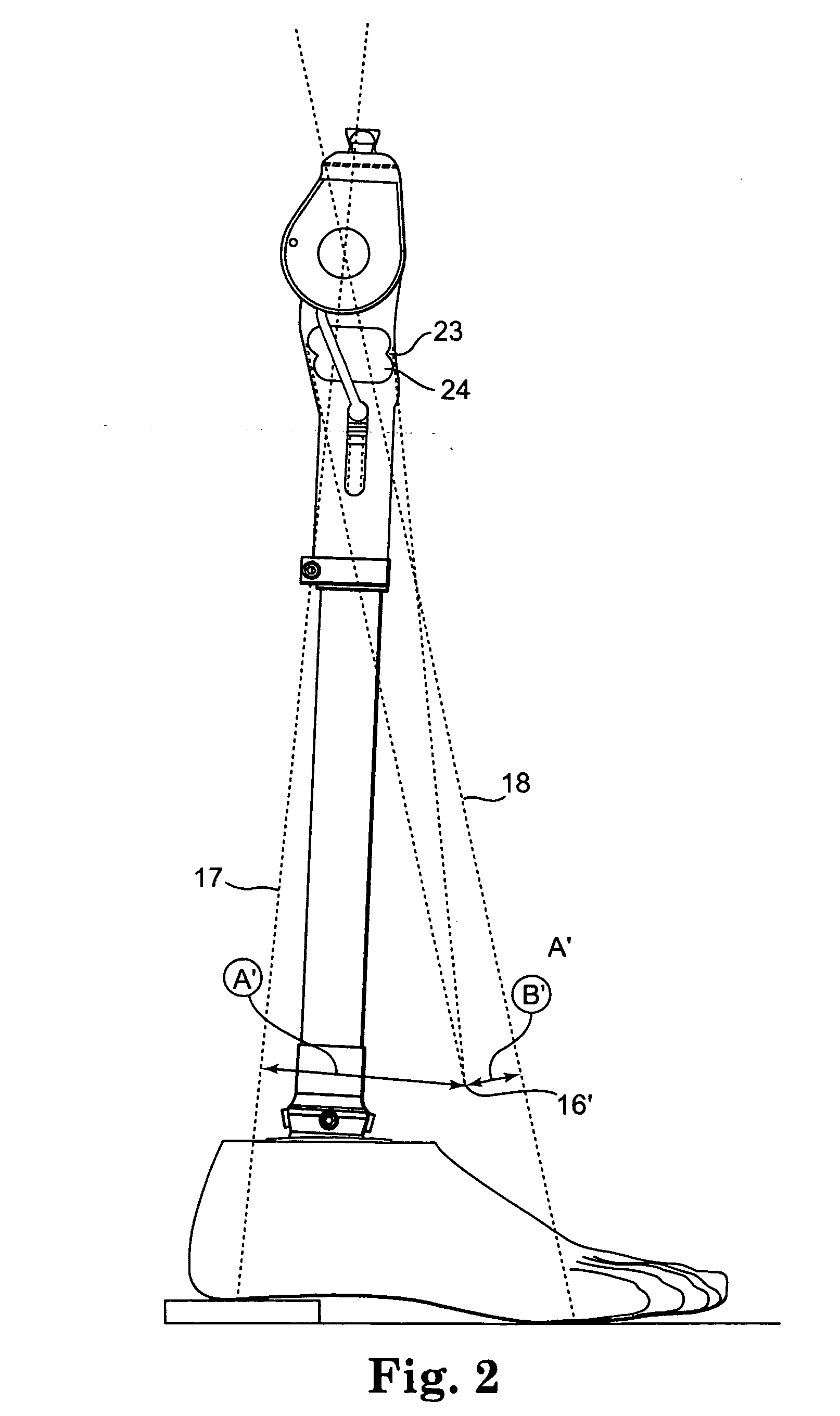Torque Sensor
a technology of torque sensor and stance phase, which is applied in the field of torque sensor, can solve the problems of difficult to realize the clean divide between stance phase and swing phase, less suitable design solution, and inability to use, so as to avoid or at least reduce the structural disadvantage caused by its arrangement in the structural elemen
- Summary
- Abstract
- Description
- Claims
- Application Information
AI Technical Summary
Benefits of technology
Problems solved by technology
Method used
Image
Examples
Embodiment Construction
[0023] The prosthesis shown in FIG. 1 has a mono-axial knee joint 1 which can be connected via an adapter 2 to a thigh prosthesis part (not shown). The knee joint 1 has, on its underside, a tube attachment 3 in which a rod 5 connected to an eccentric pivot pin 4 is mounted displaceably in a longitudinal guide 6 counter to the restoring force of a compression spring 7. Upon a flexion movement of the knee joint 1, the rod 5 is pushed downward counter to the force of the restoring spring 7 until the articulation of the auxiliary pin 4 overcomes a lower dead center. The restoring force of the compression spring 7 then supports the further flexion and stabilizes the knee in the flexed position when, for example, the prosthesis user has sat down.
[0024] The knee joint 1 is joined via a connecting sleeve 8 to a below-knee tube 9, the other end of which is connected to an adjustment collar 10 with adjustment pin of an artificial hingeless foot 11. To illustrate the position of use of the ar...
PUM
 Login to View More
Login to View More Abstract
Description
Claims
Application Information
 Login to View More
Login to View More - R&D
- Intellectual Property
- Life Sciences
- Materials
- Tech Scout
- Unparalleled Data Quality
- Higher Quality Content
- 60% Fewer Hallucinations
Browse by: Latest US Patents, China's latest patents, Technical Efficacy Thesaurus, Application Domain, Technology Topic, Popular Technical Reports.
© 2025 PatSnap. All rights reserved.Legal|Privacy policy|Modern Slavery Act Transparency Statement|Sitemap|About US| Contact US: help@patsnap.com



